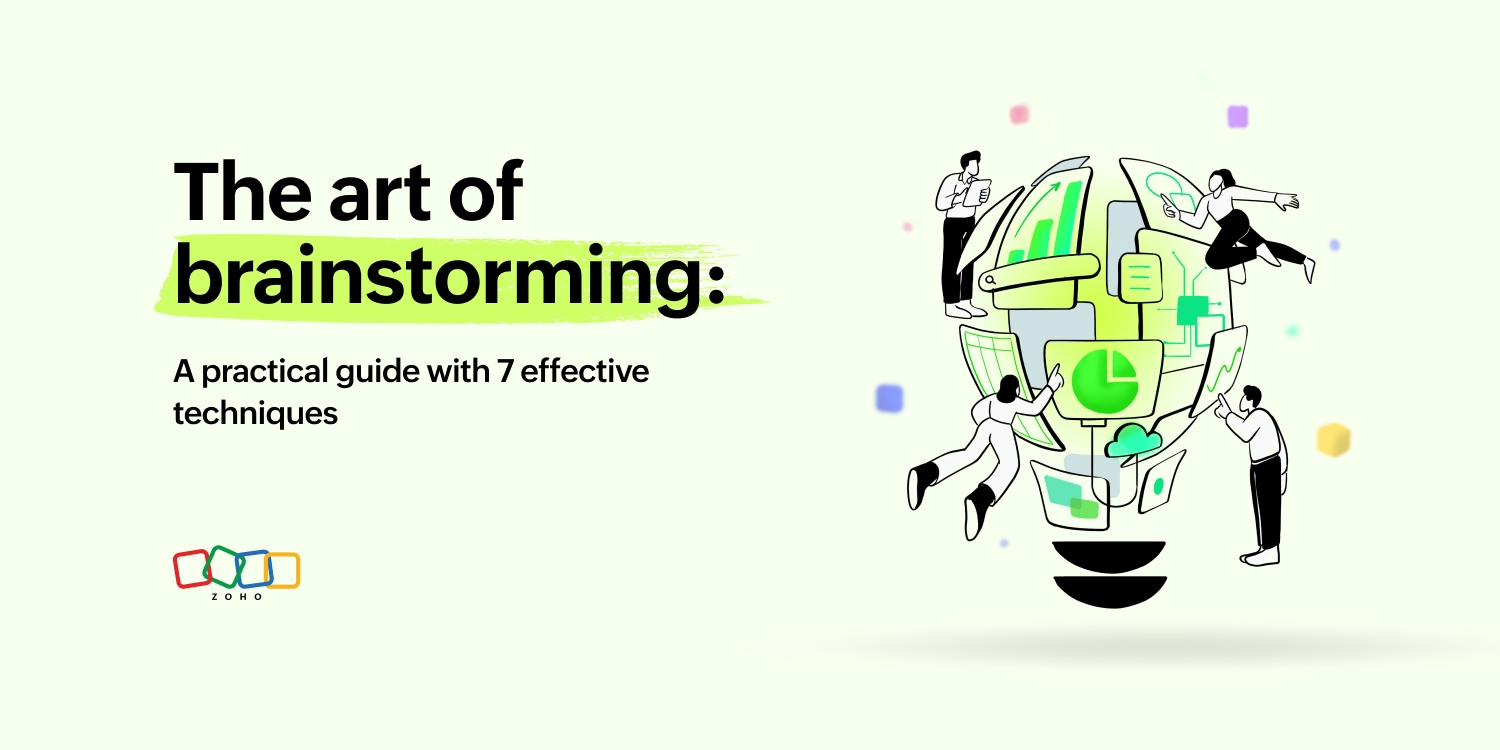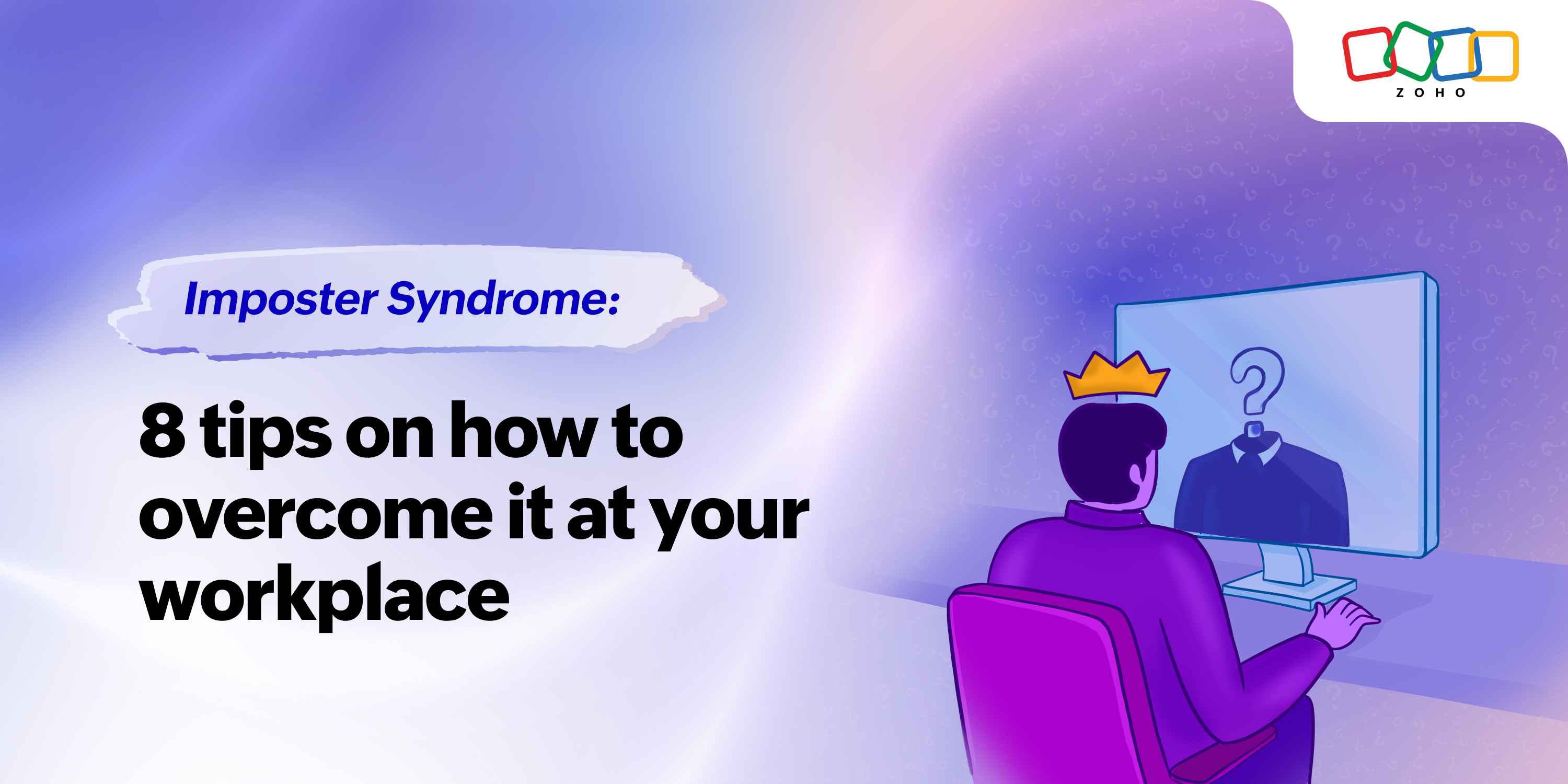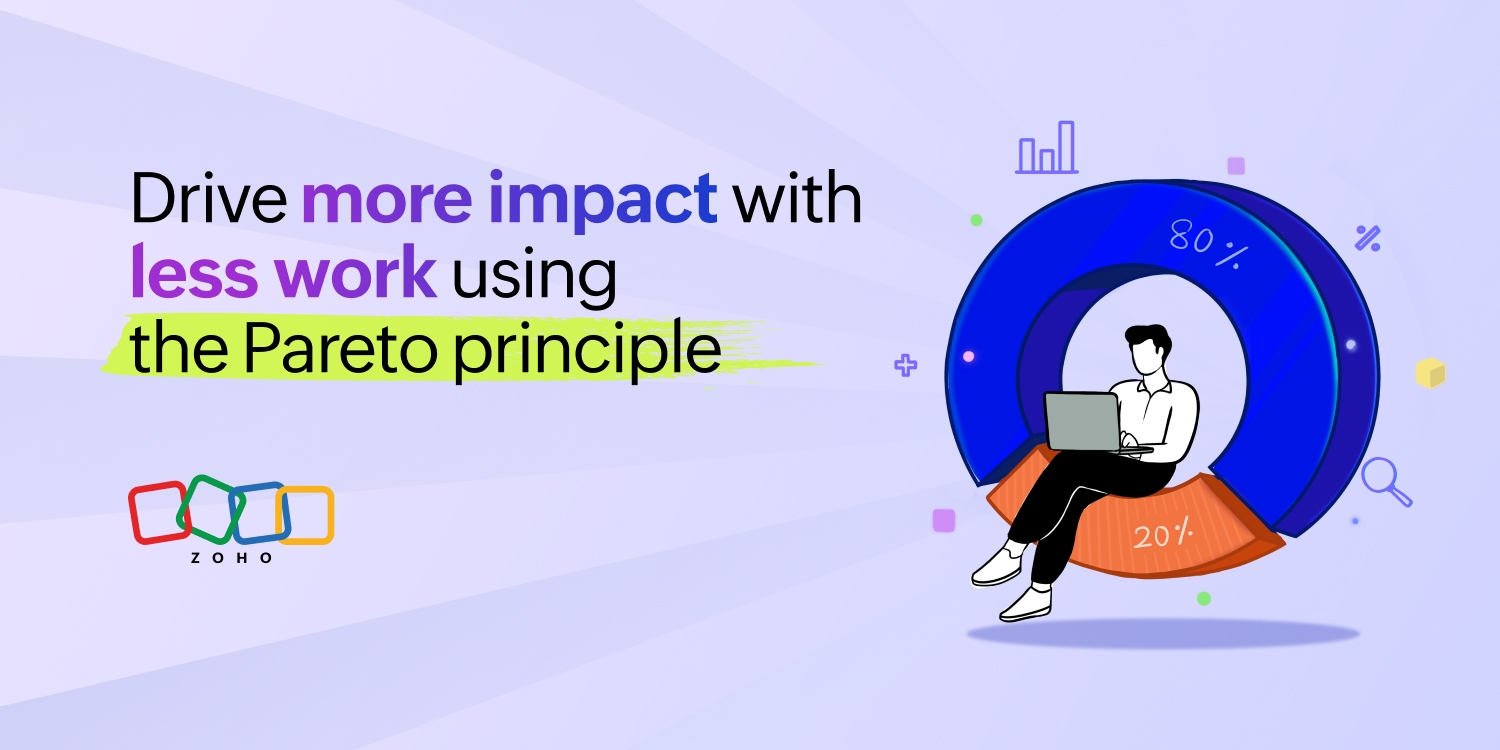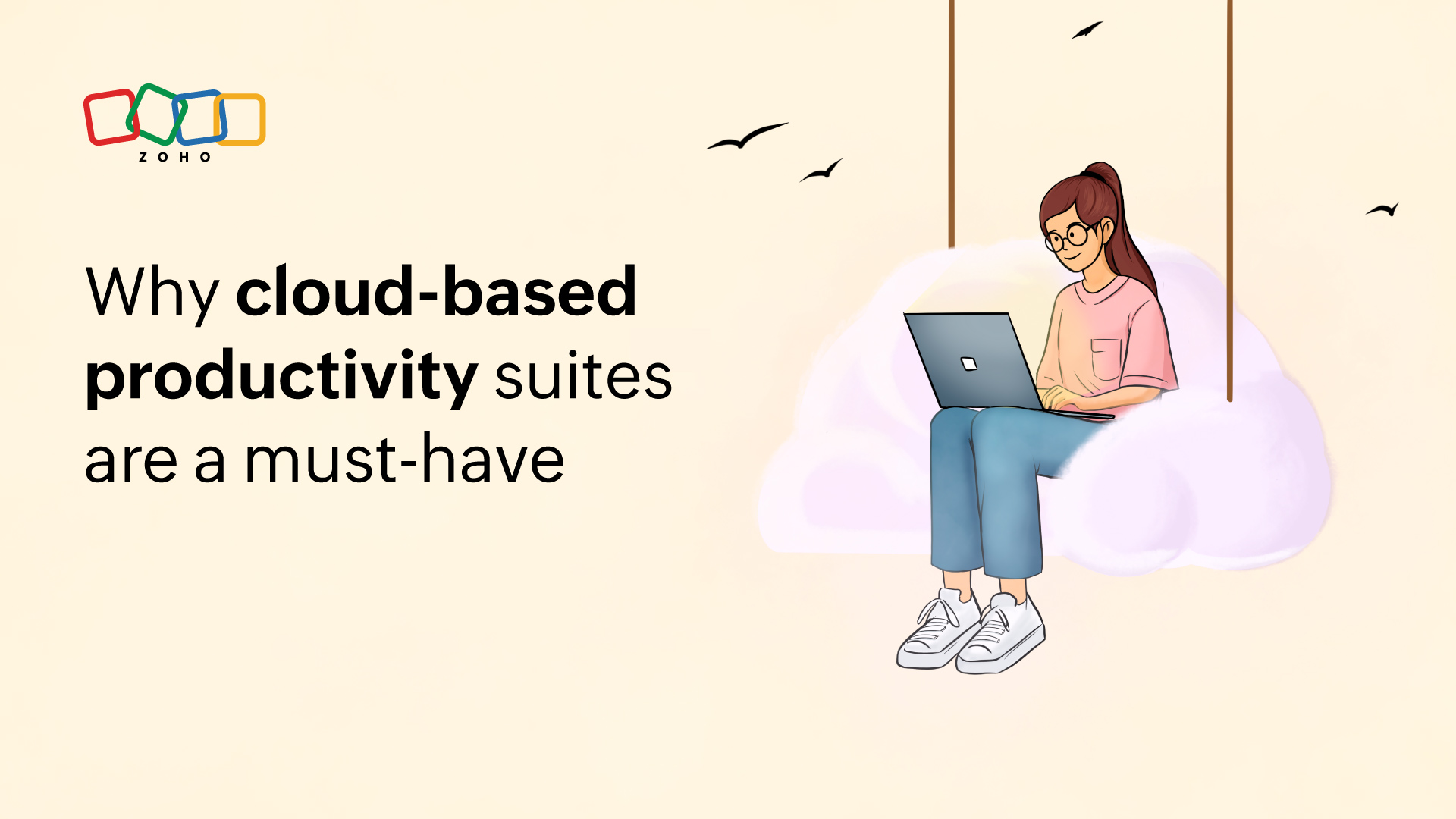- HOME
- All Topics
- Productivity in the workplace
- The art of brainstorming: A practical guide with 7 effective techniques
The art of brainstorming: A practical guide with 7 effective techniques
- Published : January 31, 2025
- Last Updated : March 24, 2025
- 537 Views
- 18 Min Read
Need a brilliant idea? Brainstorm. That's what we've been told, and that's what we follow.
Have you ever tried brainstorming and ended up with more blank stares than brilliant ideas? You're not alone. Brainstorming, in theory, is fantastic—it's an uninhibited exchange of perspectives from where innovation is born.
But let's be honest, sometimes it's more like a polite meeting where everyone stares at the whiteboard hoping someone else has a good idea. Issues like "group thinking" (where everyone just nods along), a lack of focus, or that one person who really loves the sound of their own voice can derail even the best intentions.
The truth is, effective brainstorming isn't just about throwing ideas at the wall and seeing what sticks. This article provides practical, actionable strategies to keep your brainstorming sessions on track, productive, and even fun.

Understanding brainstorming
What is brainstorming?
Imagine you're trying to plan the perfect surprise party. You wouldn't just settle on the first idea that pops into your head, right? You'd gather your friends, throw out a bunch of different possibilities—from themes and decorations to food and entertainment—and see what sticks. That's the essence of brainstorming.
Whether you're tackling a complex business issue or simply figuring out what to cook for a potluck, brainstorming is a powerful technique where you or a group generate a large number of ideas without immediate judgment.
Think of brainstorming as casting a wide net to catch the best ideas. The goal is to let your creativity flow freely because even the most obvious suggestions will spark truly innovative solutions.
Types of brainstorming
There are two main ways to brainstorm:
- Individual brainstorming: This is like having a solo jam session with your thoughts. Sit down with a pen and paper or use a digital tool to capture your ideas as they come to you. This method allows you to fully focus on your own thoughts and explore ideas without any outside influence or distractions. It's especially useful for those who prefer to think deeply and reflect.
Group brainstorming: This is where the magic of collaboration happens. A group of friends or colleagues sitting around a table, bouncing ideas off each other and building on each other's suggestions. This type of brainstorming creates new connections and perspectives that you might not have come up with on your own. It's a great way to tap into the collective creativity of a group and generate a wider range of ideas.
Why is brainstorming so effective?
Brainstorming isn't just a fun exercise; it's a powerful tool for generating innovative solutions. Here's why.
It encourages diverse perspectives
Imagine you're trying to design a new app. If only the engineering team weighed in, you might end up with a technically brilliant app that's difficult for users to navigate.
Brainstorming benefits from the diverse perspectives of participants with varied backgrounds, experiences, and expertise. A marketing team member may suggest a clever promotional strategy, while a customer service representative highlights potential user pain points. This diverse input leads to more well-rounded and effective solutions.
It breaks habitual thought patterns
We all fall into mental ruts sometimes, approaching problems the same way we always have. Brainstorming forces us to think outside the box.
By encouraging a free flow of ideas, even seemingly wild ones, we break free from these habitual thought patterns and discover fresh, innovative approaches.
It promotes team collaboration and ownership of solutions
When a team brainstorms together, everyone has a chance to contribute. This fosters a sense of shared ownership in the final solution.
This collaborative approach not only leads to better solutions but also increases team morale, making implementation smoother and more successful.
How to prepare before you begin brainstorming
1. Set clear objectives
Before diving into a brainstorming session, it's crucial to lay a solid foundation by setting clear objectives. This ensures that everyone is on the same page and that the session stays focused and productive.
2. Define the problem or challenge clearly
Ambiguity is the enemy of effective brainstorming. If the problem is vaguely defined, the resulting ideas will be scattered and irrelevant.
For example, instead of a vague objective like "improve sales," a more specific definition would be "increase online sales of Product X by 15% in the next quarter."
The clearer the problem is, the more targeted and useful the brainstorming session will be.
3. Establish specific goals to focus efforts
Setting specific goals provides a clear target for the brainstorming session.
Instead of simply aiming to "generate ideas," establish a quantifiable goal, such as "generate 10 actionable ideas to improve customer satisfaction" or "develop five innovative marketing strategies for a new product launch." This gives the team a concrete objective to work towards and helps prevent the session from veering off-topic.
Having a specific number of ideas to generate provides a measurable outcome and a sense of accomplishment when the goal is reached.
4. Create a conducive environment
The physical and emotional environment plays a significant role in the success of a brainstorming session. Picture this: attempting to brainstorm the next big innovation while dodging rogue staplers and shouting over the office printer versus a quiet, comfortable space. Which scenario is more likely to produce profound insights (and fewer headaches)?
A comfortable and distraction-free space allows participants to fully engage in the brainstorming process.
5. Provide necessary tools
Having the right tools on hand will enhance the brainstorming process. Whiteboards, flip charts, sticky notes, and markers are great for capturing and visualizing ideas.
Digital brainstorming platforms such as FigJam, Vani, Zoho Cliq, and Ideascale may also be useful for remote teams or for those who prefer to work digitally.
6. Build the right team
Just like a sports team needs a mix of players with different skills to win, a brainstorming session benefits from a diverse and well-structured team. Here's how to build a team that's primed for generating great ideas.
Include participants with diverse expertise and viewpoints
Including people with different backgrounds, experiences, and areas of expertise brings a variety of perspectives to the table.
For example, if you're brainstorming ideas for a new marketing campaign, you might include members from the marketing team, sales team, customer service, and even some customers themselves.
This diversity of thought will spark new and innovative ideas that you may not have come up with otherwise.
Limit the group size for effective communication
While diverse perspectives are important, too many participants will make it difficult for everyone to contribute effectively. A smaller group allows for more focused discussion and ensures that everyone has a chance to share their ideas.
Ideally, a brainstorming group should consist of five to 10 people.
Assign a skilled moderator
A skilled moderator plays a crucial role in guiding the brainstorming session and ensuring that it stays on track. Think of the moderator as the conductor of an orchestra.
The moderator is responsible for setting the ground rules, facilitating the discussion, encouraging participation from all members, and keeping the session focused on the objectives. They also help manage any conflicts or disagreements that may arise.
7 effective brainstorming techniques
While simply gathering a group of people and telling them to "think creatively" sometimes yields results, having a methodical approach to brainstorming will significantly boost the quality and quantity of ideas generated.
Here's a look at some effective brainstorming techniques, starting with the classic approach.
1. Classic brainstorming
Participants share ideas freely without judgment
This is the core principle of classic brainstorming: Create a judgment-free zone where everyone feels comfortable sharing whatever comes to mind, no matter how outlandish it might seem.
The goal is to generate as many ideas as possible without worrying about their feasibility or practicality at this stage.
Ideas are recorded for evaluation later
Every idea, no matter how seemingly impractical, is dutifully recorded. Use a whiteboard, a flip chart, or a digital brainstorming tool to capture these ideas.
The key is to record everything without any filtering or evaluation. This allows participants to focus on generating ideas without getting bogged down in analysis.
It works well for non-methodic sessions
Classic brainstorming is a great starting point and works well for situations where you need to generate ideas fast or when the problem is open-ended. It's a versatile technique that you can adapt to a variety of situations.
However, it's also prone to certain pitfalls, such as dominant personalities taking over or the discussion veering off-topic. That's why it's often helpful to combine classic brainstorming with other, more structured techniques.
2. Mind mapping
Visualize connections between ideas by starting with a central concept and branching out
Mind mapping is a visual brainstorming technique that helps you explore ideas and their interconnections in a non-linear way. You start with a central idea or problem and then branch out with related concepts, sub-topics, and supporting details.
Think of it like a tree, with the trunk being the central idea and the branches being related concepts. Even smaller twigs sprout off those branches.
It's a great way to visually represent the flow of your thoughts and see how different ideas relate to each other.
Identify patterns and relationships between ideas
One of the key benefits of mind mapping is that it helps you identify patterns and relationships between ideas that you might not have noticed otherwise.
By visually organizing your thoughts, you'll see how different concepts connect and influence each other. This can lead to new insights and a deeper understanding of the problem you're trying to solve.
Just like constellations, sometimes the connections between ideas are a little… out there. But hey, that's where the creative breakthroughs often happen.
3. Brainwriting
Participants write down ideas silently before sharing them
Brainwriting is a technique where participants write down their ideas individually and silently before sharing them with the group. You can use paper, sticky notes, or a digital platform.
The key is the silence—no shouting out ideas, no interrupting, just quiet contemplation, and focused writing.
It ensures equal input from introverted team members
Brainwriting levels the playing field for introverted team members who may be less comfortable speaking up in a large group. It gives them a chance to formulate their thoughts and express their ideas without feeling pressured to compete with more extroverted personalities.
It reduces influence from dominant personalities
Brainwriting also helps mitigate the influence of dominant personalities who might otherwise monopolize the conversation. By having everyone write down their ideas individually, you ensure that all voices are heard, not just the loudest ones.
You’re evaluating the ideas themselves, not the person presenting them. This will lead to a more diverse and innovative range of solutions, as ideas that may have been overshadowed in a traditional brainstorming session now have a chance to shine.
4. SCAMPER method
SCAMPER is a mnemonic that stands for seven different thinking prompts: Substitute, Combine, Adapt, Modify, Put to other uses, Eliminate, and Reverse. Each prompt encourages you to look at the problem from a different angle and challenge the status quo.
Substitute: Can you substitute one part of the problem with another? Maybe there's a material, a process, a person, or even a location that can be switched out. For example, if you're designing a new chair, can you substitute the traditional wooden legs with a more modern material like metal or plastic?
Combine: What can you combine with the existing solution to create something new? Perhaps you can combine different features, technologies, or even ideas from different industries. For example, can you combine a bicycle with a scooter to create a new form of personal transportation?
Adapt: How can you adapt the existing solution to a new context or purpose? This may involve borrowing ideas from other industries or adapting existing technologies to a new application. For example, can you adapt the principles of airplane design to create a more efficient car?
Modify: What can you modify or change about the existing solution to improve it? This may involve changing the size, shape, color, or any other aspect of the product or service. For example, can you modify the design of a toothbrush to make it more ergonomic?
Put to other uses: Can you put the existing solution to a different use than it was originally intended for? This could lead to unexpected and innovative applications. For example, can you use a discarded plastic bottle as a building material?
Eliminate: What can you eliminate from the existing solution to simplify it or make it more efficient? This could involve removing unnecessary features, steps in a process, or even entire components. For example, can you use solar power to eliminate the need for batteries in a device?
Reverse: What can you reverse or do in the opposite way? Maybe you can reverse the order of steps in a process, flip the design of a product, or even change the target audience. For example, can you design a product that's meant to be assembled before it's shipped, rather than after?
By systematically working through these prompts, you'll challenge your assumptions, break through mental blocks, and generate a wide range of innovative ideas.
5. Round-robin
Participants take turns sharing one idea at a time
Round-robin brainstorming is exactly what it sounds like: Participants take turns sharing one idea at a time, going around the group in an organized manner. This ensures that everyone has an equal opportunity to contribute and prevents any one person from dominating the discussion.
It ensures that everyone contributes, and prevents monopolization of the discussion
The beauty of the round-robin format is its inherent fairness. By giving everyone a designated turn, it ensures that even the quietest or most hesitant participants have a chance to share their ideas.
This is particularly valuable for drawing out diverse perspectives and uncovering hidden gems that may otherwise be missed. It also helps prevent those dominant individuals from taking over the conversation and turning the brainstorming session into their personal stand-up routine.
6. SWOT analysis
It identifies strengths, weaknesses, opportunities, and threats related to the problem
SWOT analysis provides a systematic framework for examining the internal and external factors that can impact a project, product, or problem. It involves identifying:
Strengths: What are the internal advantages that will help you achieve your goals? Consider your team's expertise, your company's resources, or a unique technology you possess. It's like identifying your superpowers—what makes you uniquely qualified to tackle this challenge?
Weaknesses: What are the internal disadvantages that may hinder your progress? These weaknesses may include issues like a lack of funding, outdated technology, or a skills gap within your team.
Opportunities: What external factors can you leverage to your advantage? Consider market trends, emerging technologies, or changes in regulations.
Threats: What external factors pose a challenge to your success? These might include competitors, economic downturns, or changes in customer preferences.
It balances creative and analytical thinking
SWOT analysis is a valuable tool because it combines creative brainstorming with analytical thinking. It encourages you to generate a wide range of ideas (both positive and negative) and then analyze those ideas in a structured way.
It's like having both a creative artist and a sharp-minded strategist on your team—the artist generates the ideas, and the strategist evaluates their feasibility and potential impact. This combination of creativity and analysis will lead to more robust and well-considered solutions.
7. Role storming
It encourages participants to assume different roles or personas
Role storming is a technique where participants are asked to assume different roles or personas while brainstorming. Think like a customer, a competitor, a supplier, or even a completely unrelated figure, like a celebrity or a historical figure.
The idea is to break free from your usual thought patterns and explore the problem from different viewpoints.
It unlocks new perspectives by "thinking like" another stakeholder
By stepping into the shoes of another stakeholder, you'll gain valuable insights into their needs, motivations, and concerns. This will help you identify potential solutions that you might not have considered otherwise.
For example, if you're brainstorming ideas for a new product, ask participants to think like a potential customer and consider what features they would find most appealing. Or, you ask them to think like a competitor and consider how they might try to outmaneuver you.
It’s like having a focus group inside your own brainstorming session, but with a more dramatic flair. By "thinking like" another stakeholder, you'll unlock new perspectives and generate more creative and relevant solutions. It's a great way to challenge your assumptions and broaden your understanding of the problem.
Enhancing creativity in brainstorming
While structure and focus are important, brainstorming is, fundamentally, a creative process. To unlock innovative solutions, it's essential to create an environment that encourages out-of-the-box thinking.
1. Nurture an atmosphere where even unconventional ideas are welcomed
One of the biggest barriers to creativity is the fear of judgment. To overcome this, it's crucial to create a safe and supportive environment where participants feel comfortable sharing even their most outlandish ideas.
By suspending judgment and encouraging wild ideas, you'll open up new avenues of thinking and discover truly innovative solutions.
2. Remind participants that there are no bad ideas
This is a fundamental rule of brainstorming. Even seemingly impractical or silly ideas can spark new connections and lead to more viable solutions. By explicitly stating that there are no bad ideas, you'll encourage participants to let go of their inhibitions and share their thoughts freely.
3. Use creative prompts or thought exercises to shift perspectives .
Creative prompts and thought exercises help jolt participants out of their usual thought patterns and encourage them to look at the problem from a different angle.
For example, ask them to consider how a completely different industry or even a fictional character would approach the problem. This may lead to unexpected and innovative solutions.
4. Introduce random words, images, or scenarios to inspire fresh thinking
Introducing random elements into the brainstorming session is a powerful way to spark new ideas. This may involve using a random word generator, showing a series of unrelated images, or presenting a hypothetical scenario. The goal is to create unexpected connections and encourage participants to think beyond their usual constraints.
For example, if you're brainstorming ideas for a new type of transportation, create an image of someone getting lost in a foreign city without a map. This might seem completely unrelated, but it might spark ideas about navigation systems or personalized travel guides.
5. Use lighthearted activities or icebreakers to set a relaxed tone
Starting the brainstorming session with a fun icebreaker or a lighthearted activity helps break the ice and creates a more relaxed and comfortable atmosphere. This is especially helpful if the participants don't know each other well or if they're feeling stressed or anxious.
Think of it like warming up before a workout—it helps to loosen up your muscles and prepare your body for activity. Similarly, lighthearted activities help warm up your mind and prepare it for creative thinking.
6. Use humor to spark creativity and reduce tension
Humor has a powerful effect on our brains. It helps reduce stress, increase dopamine levels, and promote more flexible and creative thinking. By incorporating humor into the brainstorming session, you create a more positive and engaging environment where participants feel more comfortable sharing their ideas.
Just be sure to keep the humor appropriate and avoid anything that may be offensive or distracting to anyone on the team.
7. Set short time limits for idea generation to increase focus and energy
Parkinson's Law states that "work expands so as to fill the time available for its completion." This principle applies to brainstorming as well. If you give participants an unlimited amount of time to generate ideas, they may get bogged down in details and over-analyze their ideas. This stifles creativity and prevents them from generating truly innovative solutions.
By setting short time limits, you create a sense of urgency and encourage participants to think quickly and creatively, and go with their gut instincts.
Avoiding common brainstorming pitfalls
Even with the best intentions and the fanciest flip charts, brainstorming sessions sometimes go awry. Recognizing and addressing these common pitfalls is crucial for maximizing the effectiveness of your brainstorming efforts—and minimizing the risk of everyone staring blankly at each other.
1. Overcome group thinking
One of the biggest dangers in group brainstorming is "group think," a phenomenon where the desire for harmony or conformity within the group overrides critical thinking and the expression of dissenting opinions. This leads to a lack of innovation and poor decision-making.
Encourage dissenting opinions and alternative views
To combat group think, it's essential to actively encourage participants to share their honest opinions, even if they differ from the majority. Creating a safe space where everyone feels comfortable expressing their views is crucial.
Appoint a "devil's advocate" to challenge consensus ideas constructively
A helpful technique for preventing group think is to appoint a "devil's advocate," someone whose specific role is to challenge the prevailing ideas and offer alternative perspectives. It's like having a quality control inspector in a factory—they check for defects and ensure that the final product meets the highest standards.
This person's job isn't to be a naysayer for the sake of it, but rather to examine the assumptions with a critical eye and identify any potential weaknesses of the proposed solutions. This helps uncover hidden flaws and leads to more robust and well-considered outcomes.
2. Keep everyone in the game
While designed for collaborative thinking, brainstorming sessions occasionally become a showcase for certain... overly enthusiastic individuals. This may stifle the contributions of quieter members and limit the range of ideas generated. Managing dominant personalities is key to ensuring a balanced and productive session.
Establish ground rules for equal participation
Setting clear ground rules at the beginning of the session will prevent dominant personalities from taking over. These rules may include things like taking turns speaking, limiting individual speaking time, or emphasizing the importance of listening respectfully to others.
Use organized techniques like round-robin or brainwriting to ensure balance
Structured brainstorming techniques are particularly effective in managing dominant personalities.
Round-robin: In a round-robin format, each participant takes a turn sharing one idea at a time. This ensures that everyone has an equal opportunity to contribute and prevents any one person from dominating the conversation.
Brainwriting: Brainwriting involves participants writing down their ideas individually before sharing them with the group. The written ideas are then circulated among the group, allowing participants to build on each other's suggestions.
3. Keep everyone focused
Brainstorming sessions, by their very nature, are dynamic and free-flowing. However, it's essential to ensure that the discussion remains focused on the established objectives. Allowing the conversation to stray too far off-topic wastes valuable time and dilute the effectiveness of the session.
Keep the discussion aligned with the session's objectives
Before starting the brainstorming session, clearly reiterate the objectives and keep them visible throughout the discussion. This serves as a constant reminder of the purpose of the session and helps to keep everyone on track.
Redirect tangents tactfully and document off-topic ideas for future sessions
It's inevitable that tangents will appear during a brainstorming session. When this happens, it's important to redirect the conversation back to the main topic in a tactful and respectful manner.
One effective technique is to acknowledge the off-topic idea and suggest documenting it for a future discussion. This validates the contributor's input while ensuring that the current session stays focused.
For example, if the team is brainstorming new marketing strategies and the conversation veers into a discussion about office renovations, the moderator could say something like, "That's an interesting point about the office space. Let's make a note of it for a separate discussion and bring our focus back to the marketing strategies for now."
This approach acknowledges the idea without derailing the current brainstorming session.
Post-brainstorming: Refining ideas
So, you've just emerged from a brainstorming session, armed with a mountain of ideas—some brilliant, some less so. Now comes the crucial next step: turning that raw material into actionable strategies. This is where the post-brainstorming phase comes in, and it's all about refinement.
1. Make sense of the creative chaos
Group similar ideas into categories or themes
The first step is to bring order to this creative chaos by grouping similar ideas together. This makes it easier to see connections and identify potential areas of focus. Think of it like organizing your closet. Instead of a jumble of clothes, you have neatly organized sections for shirts, pants, and shoes, making it much easier to find what you're looking for.
This process of categorization helps you see the bigger picture and identify key themes that emerged during the brainstorming session.
Use visual tools like affinity diagrams to identify patterns
Affinity diagrams are a powerful visual tool for organizing large amounts of data, including brainstorming ideas. They involve writing each idea on sticky notes and then grouping similar notes together based on their natural relationships.
This creates visual clusters of related ideas, making it easier to identify patterns and themes. This visual representation is incredibly helpful for understanding the overall landscape of ideas and identifying potential areas for further exploration.
2. Evaluate feasibility and impact
Assess ideas based on criteria like feasibility, cost, time, and potential impact
Now that you've got your organized clusters of ideas, it's time to put them through a rigorous (but hopefully not too painful) evaluation process. This involves assessing each idea based on practical criteria such as:
- Feasibility: Can we actually do this? Do we have the resources, technology, and expertise to make it happen?
- Cost: How much will it cost to implement this idea? Are we talking a few dollars, or a small country's GDP?
- Time: How long will it take to implement this idea? Are we talking days, weeks, months, or years? (Or geological timescales?)
- Potential Impact: What kind of impact will this idea have? Will it be a game-changer or just a minor tweak?
Use voting or ranking methods to prioritize the ideas
Once you've assessed the feasibility and impact of each idea, it's time to prioritize. This can be done using various methods, such as:
- Voting: Each team member gets a certain number of votes to cast for their favorite ideas. This is a quick and easy way to get a sense of which ideas have the most support.
- Ranking: Each team member ranks the ideas in order of preference. This provides a more nuanced view of the relative value of each idea.
This process helps you focus your energy and resources on the ideas that are most likely to have a positive impact and are actually achievable. It's all about strategic resource allocation—you don't want to spend all of your time and money on an idea that's destined to fail.
3. Assign follow-up actions
Clearly define the next steps, including who's responsible for implementation
An idea, no matter how brilliant, is just an idea until someone actually does something with it. This is why clearly defining the next steps and assigning responsibility is absolutely essential. For each prioritized idea, ask yourselves:
- What specific actions need to be taken?
- Who's responsible for carrying out those actions? (Be specific—no "team" assignments; give it to a person!)
Clear roles and responsibilities are crucial for success. Otherwise, you end up with everyone assuming that someone else is taking care of it, and nothing actually gets done.
Establish timelines and milestones to track progress
Once you've assigned responsibility, it's important to set realistic timelines and milestones to track progress. This helps keep everyone accountable and ensures that the project stays on track. It also allows you to monitor progress and identify any potential roadblocks early on.
This isn't about micromanaging; it's about setting clear expectations and providing a framework for success. Plus, having milestones gives everyone a chance to celebrate small victories along the way, which is always good for morale (and maybe a celebratory high-five or two).
Without timelines and milestones, your brilliant ideas may languish in a digital folder somewhere, never seeing the light of day.
Wrapping up
Brainstorming, when executed effectively, is more than just a meeting with sticky notes and whiteboards; it's a powerful technique for problem-solving and innovation. It's a chance to tap into the collective intelligence of your team and generate solutions that might not have emerged from individual thinking alone.
By implementing these strategies in your next brainstorming session, you'll not only be better equipped to solve problems effectively but also create a more collaborative and innovative team environment.
So, go forth and brainstorm!
 Prashanth
PrashanthPrashanth is a Senior Product Marketer in the Zoho Workplace team who focuses more on Workplace productivity and how teams can work better. He loves bringing a creative element to his work. He enjoys traveling, writing, reading, and playing badminton.










